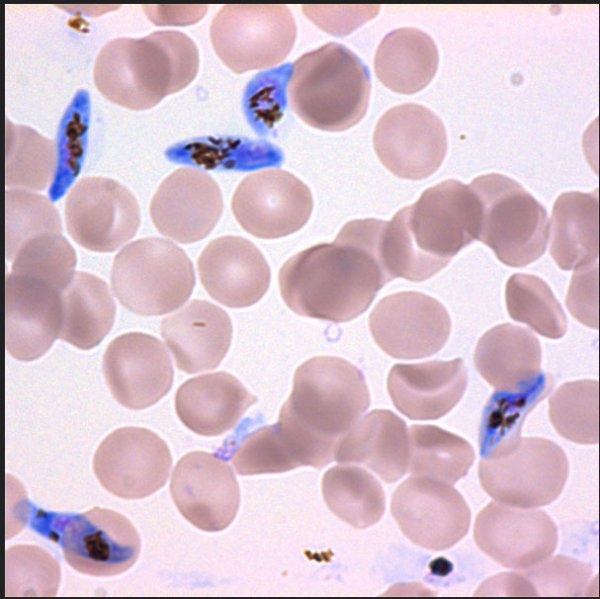Gametocyte study reveals optimal treatment options to reduce risk of malaria transmission
The WWARN Gametocyte Carriage Study Group has published a paper in BMC Medicine confirming that the level of gametocytes in the body post-treatment is influenced by the type of artemisinin combination therapy (ACT) used.

The Gametocyte Carriage Study Group, a collaboration led by Dr Teun Bousema, London School of Hygiene and Tropical Medicine (LSHTM) and Radboud University Medical Center, and WWARN researchers, found that both artemether-lumefantrine (AL) and artesunate-mefloquine (AS-MQ) effectively reduce the appearance of gametocytes after treatment when compared to dihydroartemisinin piperaquine (DP) and artesunate-amodiaquine (AS-AQ). The study also found that the level of gametocytes in the blood before and after treatment was associated with patient characteristics and treatment outcomes.
ACTs, the first line treatment against falciparum malaria infection, are highly effective at attacking the stages of the malaria parasite that result in illness and also young or immature gametocytes. However, there has been a gap in knowledge of how effective ACTs are at tackling the more mature gametocyte stage responsible for the continued transmission cycle between human and mosquito hosts.
The Gametocyte Carriage Study Group used pooled data to analyse the determinants of gametocyte carriage and compare the efficacy of the four ACTs to eliminate this phase of the malaria life cycle. The study combined data from 121 trials and nearly 50,000 patients and included a meta-analysis to assess some of the key factors that influence gametocyte carriage. The research team found that the level of gametocyte carriage was greatest before and after treatment in young patients, those with anaemia and patients who lacked the traditional ‘malaria’ fever. The appearance and rate of clearance of gametocytes after treatment, however, depended on what treatment was used.
Generally, ACTs cleared gametocytes in patients who had high levels prior to treatment. However, the rate of clearance varied significantly with the ACT regimen used, with AL and ASMQ working most effectively. Previous in vitro drug screenings also indicated that partner drugs, lumefantrine and amodiaquine, effectively reduced the level of gametocytes – verifying the results from the meta-analyses.
“Malaria cannot continue on its cycle of infection between people and mosquitos without the gametocyte stage,” says Dr Teun Bousema, Study Group lead from LSHTM and the Radboud University Medical Center. “Our pooled analysis provides a baseline from which we can develop our understanding of the risk factors associated with higher levels of gametocytes in malaria patients and the optimal treatment options to reduce gametocyte numbers post-treatment. This collaborative study approach provides evidence that can help inform interventions that aim to reduce malaria transmission.”
“Because gametocytes are only detected in a fraction of patients by microscopy, individual trials often lack the power to fully understand the risk factors and treatment effects related to gametocyte carriage before and after treatment,” says Dr Kasia Stepniewska, WWARN Head of Statistics and Study Group co-lead. “The enhanced statistical power of pooled analysis offers us the opportunity to get a thorough picture of why some people might have high levels of gametocytes and what is the optimum treatment for these patients to help halt the transmission cycle.”
In patients treated with DP, a lower treatment dose was associated with an increased appearance of gametocytes after treatment. A previous WWARN Study Group found that small children being treated with DP were not receiving a high enough dose which was putting them at risk of recurring malaria infections and also the potential of drug resistance. Based in these findings, the World Health Organization has updated the dosing recommendation.
WWARN Study Groups continue to provide evidence to help maintain the efficacy of these life-saving ACTs and inform intervention strategies.
"I found the experience of being part of the Gametocyte Study Group hugely rewarding. To be part of a pooled analysis to answer these scientifically relevant questions that could only be assessed in large data sets is a powerful and positive model for collaboration and data sharing,” adds Dr Seif Shekalaghe, Gametocyte Study Group collaborator from the Ifakara Health Institute, Tanzania.
Anaemia is often a consequence of prolonged duration of infection or recurrent malaria episodes, both of which are associated with increased gametocyte production in patients, but anaemia may also directly stimulate the production of gametocytes. Haemoglobin levels and the risk factors associated with them are being investigated further through WWARN’s Haematology Study Group, the results of which are expected later this year.
Primaquine is the only commercially available drug that targets mature P. falciparum gametocytes, but it is associated with safety concerns in glucose-6-phosphate dehydrogenase deficient patients. WWARN is currently involved in two study groups assessing the efficacy and safety of single low-dose primaquine and results are expected by the end of this year.
Find out more about our ongoing Study Groups and how you can get involved.
Publication details:
WWARN Gametocyte Study Group. Gametocyte carriage in uncomplicated Plasmodium falciparum malaria following treatment with artemisinin combination therapy: a systematic review and meta-analysis of individual patient data. BMC Medicine 2016 14:79 DOI: 10.1186/s12916-016-0621-7

